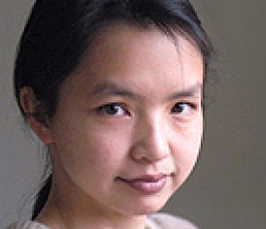Controlling Coherent Light-Matter Interactions in Semiconductors
Max Planck Lecture on Non-Equilibrium Quantum Phenomena
- Datum: 10.03.2021
- Uhrzeit: 15:00 - 16:00
- Vortragende: Hui Deng
- University of Michigan
- Ort: online via Zoom
- Gastgeber: Andrea Cavalleri, Angel Rubio

Abstract:
Coherent light-matter interactions provide a powerful means to study and control interacting matter excitations. Using the mature, III-Arsenide semiconductor system, we incoporate a designable photonic crystal mirror to control hybrid light-matter coupled modes (polaritons), and use it to study non-equilibrium quantum orders, including a Bardeen-Cooper-Schrieffer like polariton condensate [1] and limit cycles self-oscillations [2] in coupled polariton condensate. The system provides a highly controllable and accessible platform for nonlinear dynamic phenomena and non-equilibrium orders. Using two-dimensional van der Waals crystals with exceptionally strong light-matter interactions and engineering flexibility, we explore a few interesting opportunities enabled by hetero-bilayer transitional metal dichalcogenides (TMDs), including high valley polarizations [3], lasing in 2D cavities [4], bright and tunable moiré excitons [5], and nonlinear moiré quantum-dot array polaritons [6]. Future development in these materials and integration with innovative photonic structure may open doors to many new scientific and technological opportunities.
[1]. Hu, J. et al. (2021) ‘Polariton Laser in the Bardeen-Cooper-Schrieffer Regime’, Physical Review X, 11(1), p. 011018. doi: 10.1103/PhysRevX.11.011018.
[2]. Kim, S. et al. (2020) ‘Emergence of microfrequency comb via limit cycles in dissipatively coupled condensates’, Physical Review B, 101(8), p. 085302. doi: 10.1103/PhysRevB.101.085302.
[3]. Zhang, L. et al. (2019) ‘Highly valley-polarized singlet and triplet interlayer excitons in van der Waals heterostructure’, Physical Review B, 100(4), p. 041402. doi: 10.1103/PhysRevB.100.041402.
[4]. Paik, E. Y. et al. (2019) ‘Interlayer exciton laser of extended spatial coherence in atomically thin heterostructures’, Nature, 576(7785), pp. 80–84. doi: 10.1038/s41586-019-1779-x.
[5]. Zhang, L. et al. (2020) ‘Twist-angle dependence of moiré excitons in WS 2 /MoSe 2 heterobilayers’, Nature 6. Communications, 11(1), p. 5888. doi: 10.1038/s41467-020-19466-6.
[6]. Zhang, L. et al. (2021) ‘Van der Waals Heterostructure Polaritons with Moire Induced Nonlinearity’, Nature, in press.
Bio:
Hui Deng received her PhD from Stanford University in 2006. After a postdoctoral position at the California Institute of Technology, she joined the faculty of University of Michigan, Ann Arbor in 2008, where she is currently a full professor. Her current research interests include light-matter interactions and phase transition physics in micro- and nano-photonic structures and van der Waals materials. H. Deng is recipient of the Friedrich Wilhelm Bessel Research Award from the Humboldt Foundation and is a Fellow of the American Physical Society and the Optical Society of America.
Zoom login:
[...]